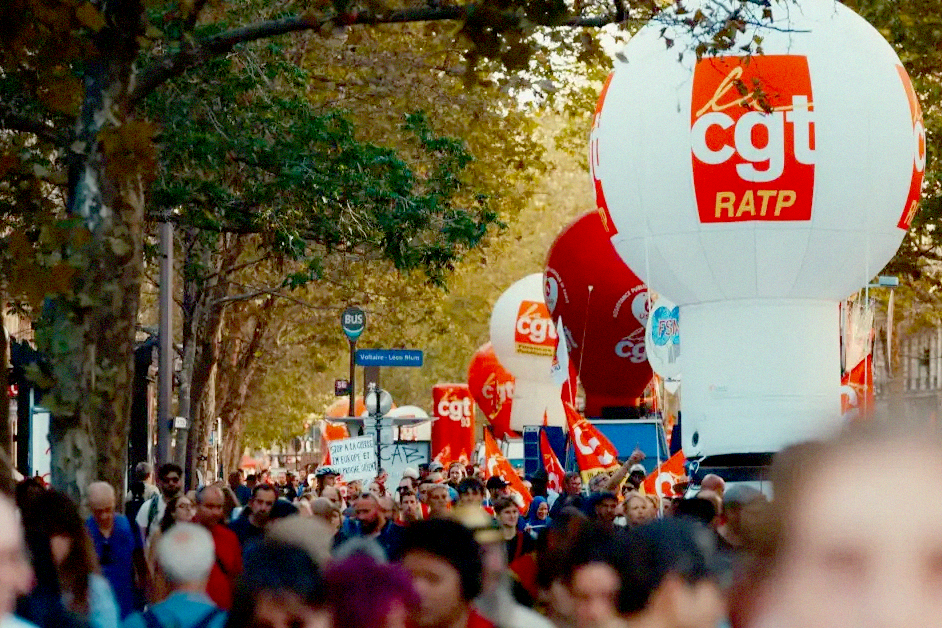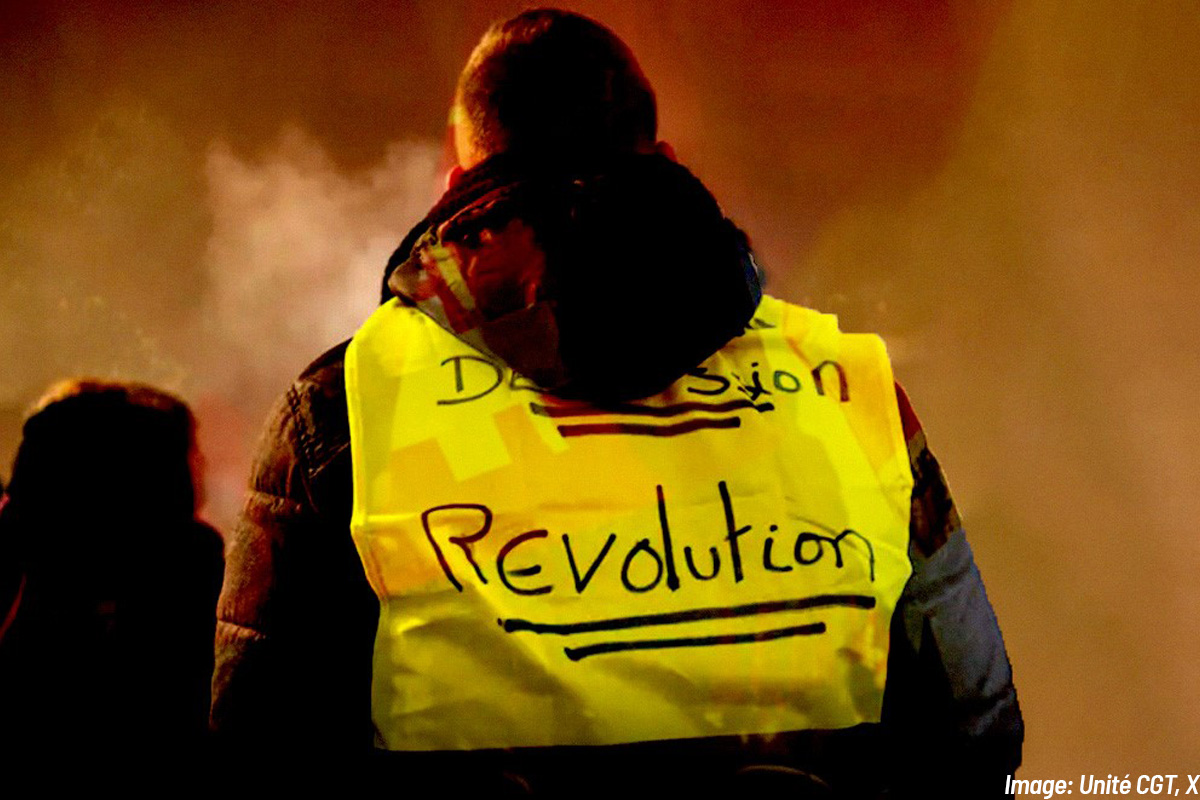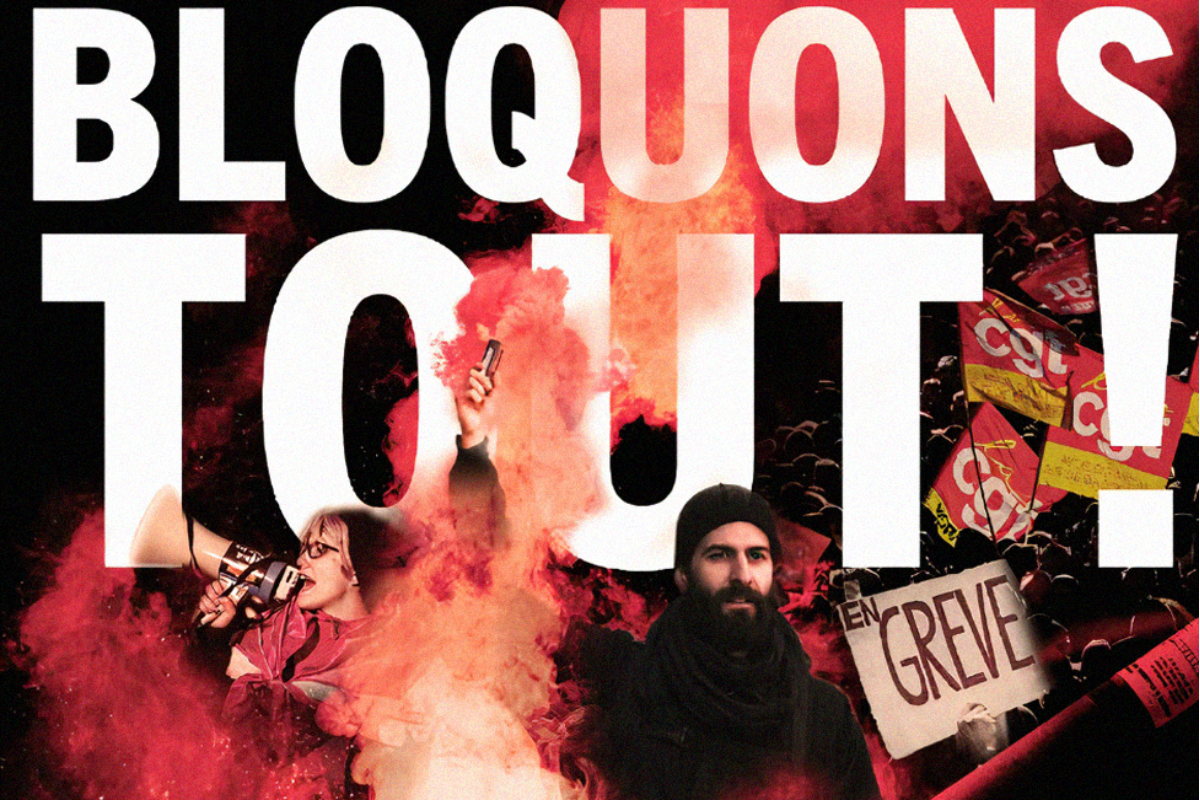The mobilisation on 18 September was massive. It involved more than a million demonstrators, numerous blockades and many strikes in transport, education and other public sector services. As for the hordes of ‘rioters’ prophesied by Interior Minister Bruno Retailleau, they did not show up.
[Originally published in French at marxiste.org]
If we consider only the raw figures, 18 September certainly did not reach the level of the strongest mobilisations of the 2023 movement against pension reform. Several ‘days of action’ at that time exceeded the 3 million demonstrator mark.
But on the one hand, in 2023, it took several days of action for the mobilisations to reach their peak. On the other hand, and more importantly, yesterday’s mobilisation was even more radical in spirit than that of 2023. Over the past two years, anger has continued to build up in the depths of society on a backdrop of constantly deteriorating living conditions, genocide in Gaza and a crisis of the regime that has seen one bogeyman after another take over as Prime Minister.
The massive presence of young people – especially in the big cities – is a central element of the movement that began on 10 September. Most of these young people rightly expect nothing from the so-called ‘consultations’ organised by Lecornu – whose only aim is to delay his downfall – and in which the leaders of the Socialist Party, Communist Party, Greens and trade union confederations are participating. The mobilised youth demand the fall of the government, Macron’s resignation and, following this, a radical break with all the austerity policies of recent years. In this context, our party’s slogan – ‘For a workers’ government!’ – has been very well received by many of the young people we have spoken to.
However, these same young people are asking themselves: where is the movement going? This question was widely asked yesterday at the demonstrations. This morning, the inter-union committee of trade union confederation leaders responded with a press release that issued an ‘ultimatum’ to the government:
“If it has not responded to their demands by 24 September, the trade unions will meet to decide very quickly on a new day of strikes and demonstrations.”
The ‘demands’ in question include the abandonment of all the measures in the ‘Bayrou plan’, as well as “the abandonment of the increase in the legal retirement age to 64” and “adequate budgetary resources for public services.”
This strategy by the inter-union committee can only lead to disappointment and confusion among large sections of young people and workers. Among the most aware and mobilised, it will even cause frustration and anger. Instead of building on the militancy expressed on 10 and 18 September to move up a gear, the inter-union committee is suspending the movement at the whim of Macron and Lecornu, giving them five days to decide whether they will abandon their reactionary policies in favour of progressive policies.
Who can believe for a moment that the Elysée and Matignon [houses of the President and Prime Minister] will respond to the inter-union committee’s ‘ultimatum’ by giving in to its demands? At best, Lecornu will announce a few symbolic measures and a minimal easing of the austerity burden. It is a question of the balance of power between the classes. Macron and Lecornu represent the big bourgeoisie, which objectively and urgently needs counter-reforms and drastic cuts in public spending: the competitiveness of French capitalism, whose relative decline has accelerated in recent years, is at stake.
The events of 10 and 18 September confirmed the growing anger and militancy of our class. But these two mobilisations alone cannot force the government to give in to the – albeit very limited – demands of the inter-union committee. In 2023, on the issue of pension reform, Macron did not give an inch in the face of fourteen ‘days of action’, several of which attracted more than 3 million demonstrators. And yet, the inter-union committee pretends to believe that, on the basis of 18 September and the threat of another ‘day of action’ (and nothing more), Macron and his clique might seriously back down this time.
The truth is that the trade union leaders fear that the mobilisation will slip out of their control. The so-called ‘ultimatum’ is just a pretext to postpone the next mobilisation until around the end of September (or even later). Many young people and workers understand this, including many political and trade union activists. Therefore, they cannot leave the leadership of the movement in the hands of an inter-union committee that is trying to channel and dilute it.
All of this places a great responsibility on the shoulders of the largest and most militant organisations in the labour movement. As we wrote on 15 September:
“By calling for a ‘general strike’, Mélenchon has hit the nail on the head. But building a general strike and, above all, a vast movement of renewable strikes, which alone can create the conditions for a decisive victory for our side, requires enormous agitation and organisation – sector by sector, company by company.
“Several CGT federations and local structures are pushing in this direction, against the will of their confederal leadership. La France Insoumise must side with the left wing of the CGT and join with it in a broad campaign to build a lasting ‘blockade’ of the country. In doing so, the workers will demonstrate to everyone – and first and foremost to themselves – that they are the decisive force in society, the force that must take power and reorganise the economy on new foundations: socialist foundations.”





